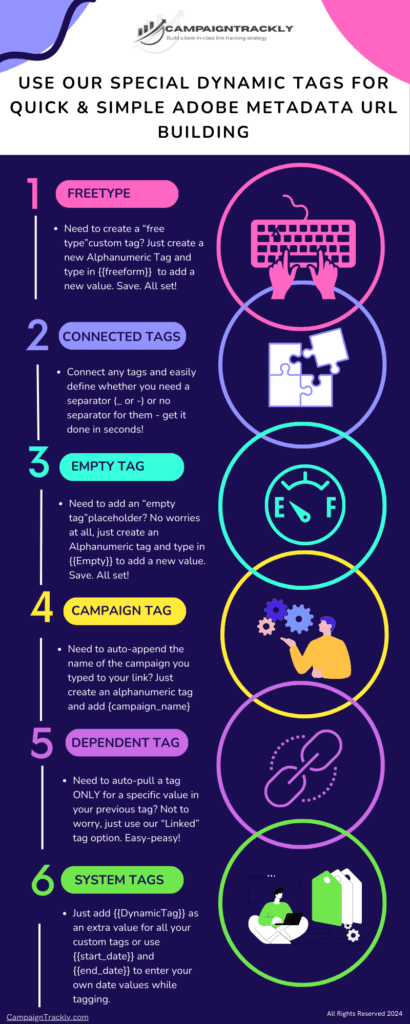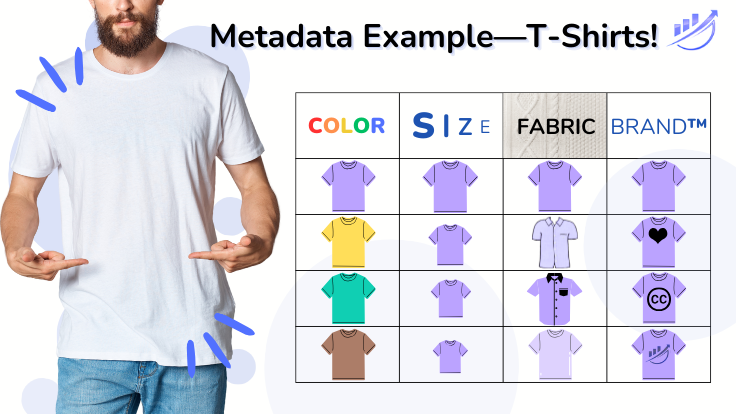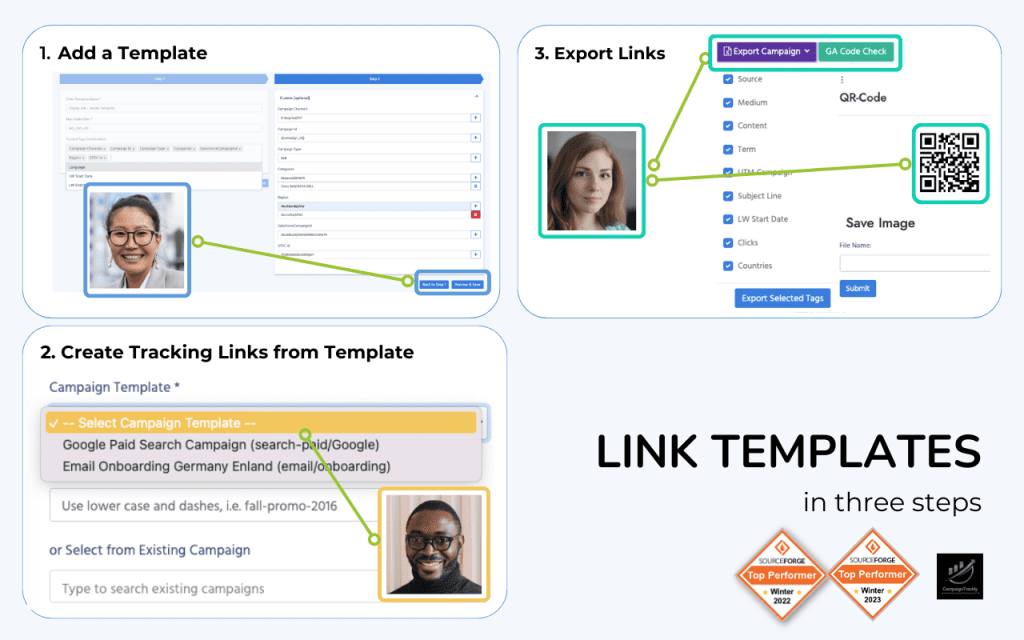What is metadata? In short, metadata is extra information about something – a book, product, or marketing campaign – that enables you to compare it against the rest of its kind.
Take a T-shirt, for example. It’s metadata would include its size, color, fabric and brand. Meanwhile, a book’s metadata would include its author, genre, length, year published, language, etc.
What Is Metadata in Marketing Campaigns
If you manage a marketing campaign, its metadata will include things like:
- Campaign start date
- End date
- Promotional channel
- Call to action
- Locale
- Audience
- Content
- Tactic
- Landing page
- Type (awareness, leadgen, conversion, etc)
- Business Unit
- Brand or product name, etc.
These attributes in essence enable you to compare your campaigns with each other.
This way, you can see which one performs the best, see how specific business goals are met, and process that information for reporting purposes.
Every metadata component allows you to group, sort, or filter on it. If you use all the metadata attributes for your campaigns, you can sort and compare them against every one of them in tools like Google Analytics.
The metadata is usually structured in a template and has specific format and naming conventions. It works best if applied consistently across all your campaigns.
What is Metadata – An Example
A classic example of digital marketing campaign metadata are the Google Analytics UTM parameters added to campaign destination URLs.
These UTM tags have specific naming conventions and formatting which have to be followed exactly.
Whenever you follow them, you get great insights about how well your campaigns drive traffic to your website.
By the same token, inconsistent metadata leads to unreliable insights. As a result, you might make budgetary or promotional decisions that could have low or negative ROI.
Metadata can be of various types, including descriptive (like the T-shirt example) or structural.
Specifically, an example of structural metadata is search engines, which use UTM tags to rank webpages.
🔍 Why Use Metadata in Your Campaign URL Links (Here at CampaignTrackly we called them Custom Tags) ?
Campaign custom tags or metadata help you layer additional, campaign-specific intelligence into every link you build — therefore enabling deeper analytics, better segmentation, and more informed decision-making.
Think CRM data, affiliate tracking, region codes, customer types, campaign types — and more.
🧩 Types of Metadata aka Custom Tags You Can Create:
Because the type of metadata tags you can use to track and build reporting for your marketing campaigns depends on the size, type, and markets of your business, some companies might have fairly simple set of metadata tags. Conversely, others can have dozens and dozens of metadata, especially if they have teams across the globe and a diverse portfolio of products.
- Alphanumeric metadata tags (letters + numbers) – for unique IDs for some of your events, for example
- Numeric-only metadata tags – e.g., Salesforce campaign IDs are very popularly added to many campaign URL tracking links
- Hidden value tags for naming conventions – many times, companies create concatenated campaign names that consist of multiple two or four-letter/number codes, like 2504-EN-US-NY-AWR-SPR-B2B-SEC-SGM1-DNLD-SOC-FB.
- Each code has a meaning, expressed via a “friendly name” – for example AWR in the concatenation above stands for Awareness Customer Journey Stage, SOC – stands for social media, FB is short for Facebook, EN is short for English language, and more.
- Hidden value tags are a combination of a friendly name and a code, where the human user selects the friendly value and the UTM builder adds in the link the code for that value.
- Example: Ensligh Language|EN means a user selects what makes sense to them – “English Language”, but in the URL link, campaign name will have the code EN.
- Multi-value tags for multiple selections – this is very similar to Hidden value tags, but involve more values, connected together via specific connector like a dash, pipe, undescore, etc.
- Unique identifier metadata tags for asset-level tracking – these are often randomly generated identifier to make sure an asset value is never duplicated
- Nested tags that connect related data points into hierarchies – these are tags that can conditionally connect to other metadata tags.
📌 Where You’ll Use Them:
- Want to store and track your Salesforce campaign ID? → Use a numeric tag
- Need to implement a campaign naming convention? → Combine hidden value tags like year, region, brand, and channel
- Looking to track affiliate partners? → Set up a custom dropdown tag with dynamic partner names and select one per link, etc.
You can scale your metadata system without limits — and get consistent, governed tracking across every campaign, while ensuring accuracy and ease of use, by leveraging CampaignTrackly’s three-in-one URL Campaign builder platform. Want to chat about that? Let’s show you a CampaignTrackly demo.
Additionally, you can see a visualization of all the metadata tags that we empower our customers to create:

For more information, click here.









